FLATLETS Anna Orłowska 25 IX 2020 – 21 XI 2020 Gdańsk City Gallery CURATOR Gabriela Warzycka-Tutak
FLATLETS Anna Orłowska 25 IX 2020 – 21 XI 2020 Gdańsk City Gallery CURATOR Gabriela Warzycka-Tutak

Those who have visited a burgher house in Gdańsk’s Main City are probably no strangers to its multi-storey layer cake chaos. Covered on the outside with an icing made of paintings and stonework decoration, the interior of the building hides uneven layers of walls cemented with plaster resembling confectioner’s custard. The corridors and staircases suddenly lose their continuity intersected by a few steps. The bends and windows face an unexpected side of the building, ruining the logic of the route from the hall to a room or from one floor to another. The rooms seem too big or too small for their designated functions. The air circulation may be too dynamic or too slow. The temperature and humidity inside are completely unlike what we expect judging from the thick, solid walls.
Those who have visited a burgher house in Gdańsk’s Main City are probably no strangers to its multi-storey layer cake chaos. Covered on the outside with an icing made of paintings and stonework decoration, the interior of the building hides uneven layers of walls cemented with plaster resembling confectioner’s custard. The corridors and staircases suddenly lose their continuity intersected by a few steps. The bends and windows face an unexpected side of the building, ruining the logic of the route from the hall to a room or from one floor to another. The rooms seem too big or too small for their designated functions. The air circulation may be too dynamic or too slow. The temperature and humidity inside are completely unlike what we expect judging from the thick, solid walls.
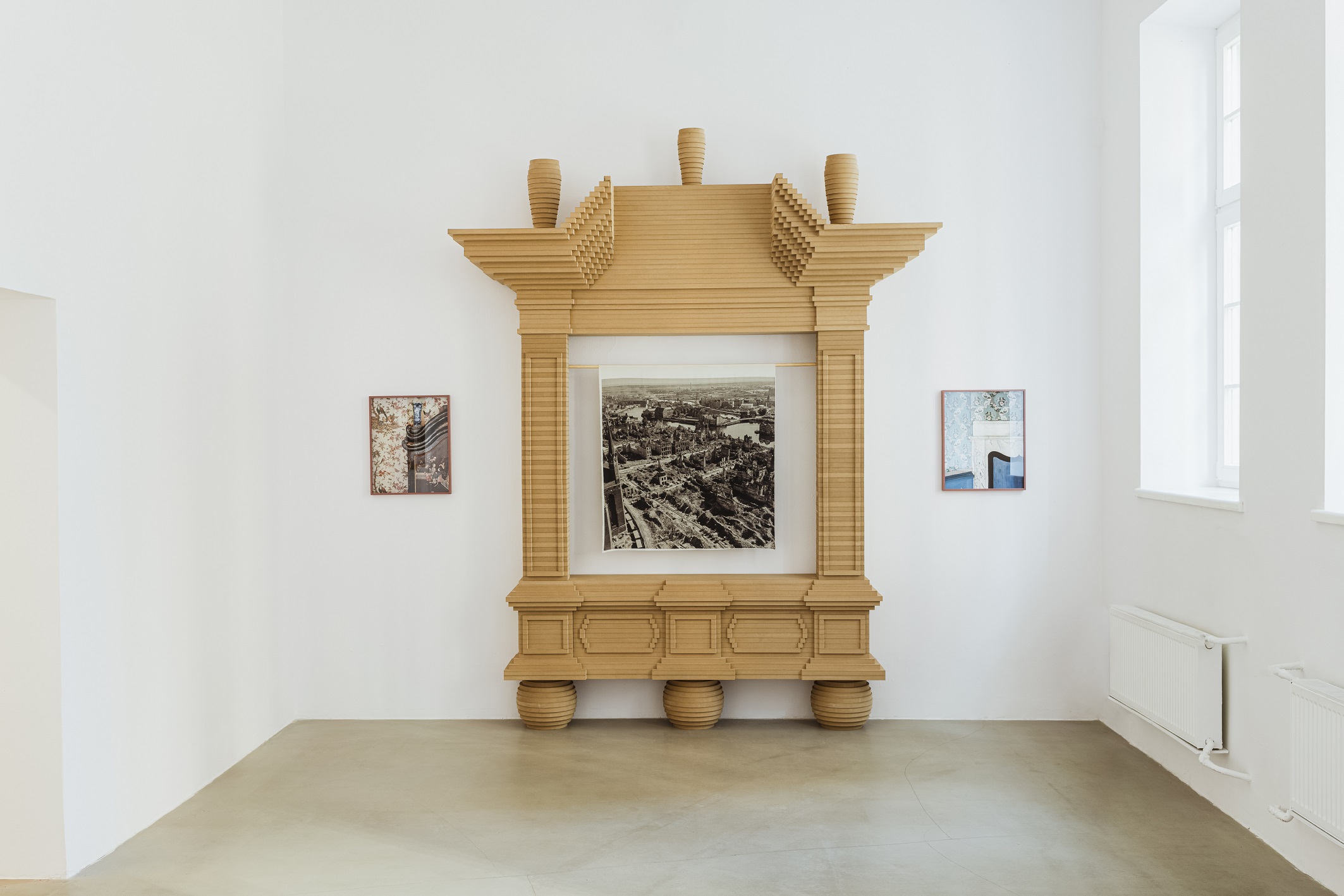
Kazimierz Lelewicz’s famous photographs of the Main City in ruins after the end of World War II explains this spatial and construction material hotchpotch. The area was reconstructed on the basis of the remnants of pre-war walls, basements and traffic routes. Missing structural elements were often supplemented using reinforced concrete, with preserved decoration fragments pasted therein. Efforts were made to improve the functionality of old burgher houses according to the doctrine of modern ergonomics. Steel handrails were added in some places, while in others a dark basement was given extra light. The mock-up effect was not feared and the decisions made during the post-war reconstruction were brought into relief.
Kazimierz Lelewicz’s famous photographs of the Main City in ruins after the end of World War II explains this spatial and construction material hotchpotch. The area was reconstructed on the basis of the remnants of pre-war walls, basements and traffic routes. Missing structural elements were often supplemented using reinforced concrete, with preserved decoration fragments pasted therein. Efforts were made to improve the functionality of old burgher houses according to the doctrine of modern ergonomics. Steel handrails were added in some places, while in others a dark basement was given extra light. The mock-up effect was not feared and the decisions made during the post-war reconstruction were brought into relief.
Kazimierz Lelewicz’s famous photographs of the Main City in ruins after the end of World War II explains this spatial and construction material hotchpotch. The area was reconstructed on the basis of the remnants of pre-war walls, basements and traffic routes. Missing structural elements were often supplemented using reinforced concrete, with preserved decoration fragments pasted therein. Efforts were made to improve the functionality of old burgher houses according to the doctrine of modern ergonomics. Steel handrails were added in some places, while in others a dark basement was given extra light. The mock-up effect was not feared and the decisions made during the post-war reconstruction were brought into relief.

Photography by Kazimierz Lelewicz / courtesy of Gdańsk Museum
Photography by Kazimierz Lelewicz / courtesy of Gdańsk Museum

The Uphagen House in ul. Długa 12 is one of such layer cakes, created anew during the rebuilding of the Main City between 1946 and 1953. Only a tiny part of the building’s fabric is original, while the majority results from the reconstruction supervised by heritage conservators. Partly preserved interior decoration elements, which survived in the conservator’s storehouse in Gdańsk Oliwa, were used in the process.
The Uphagen House in ul. Długa 12 is one of such layer cakes, created anew during the rebuilding of the Main City between 1946 and 1953. Only a tiny part of the building’s fabric is original, while the majority results from the reconstruction supervised by heritage conservators. Partly preserved interior decoration elements, which survived in the conservator’s storehouse in Gdańsk Oliwa, were used in the process.
The Uphagen House in ul. Długa 12 is one of such layer cakes, created anew during the rebuilding of the Main City between 1946 and 1953. Only a tiny part of the building’s fabric is original, while the majority results from the reconstruction supervised by heritage conservators. Partly preserved interior decoration elements, which survived in the conservator’s storehouse in Gdańsk Oliwa, were used in the process.
The Uphagen House in ul. Długa 12 is one of such layer cakes, created anew during the rebuilding of the Main City between 1946 and 1953. Only a tiny part of the building’s fabric is original, while the majority results from the reconstruction supervised by heritage conservators. Partly preserved interior decoration elements, which survived in the conservator’s storehouse in Gdańsk Oliwa, were used in the process.
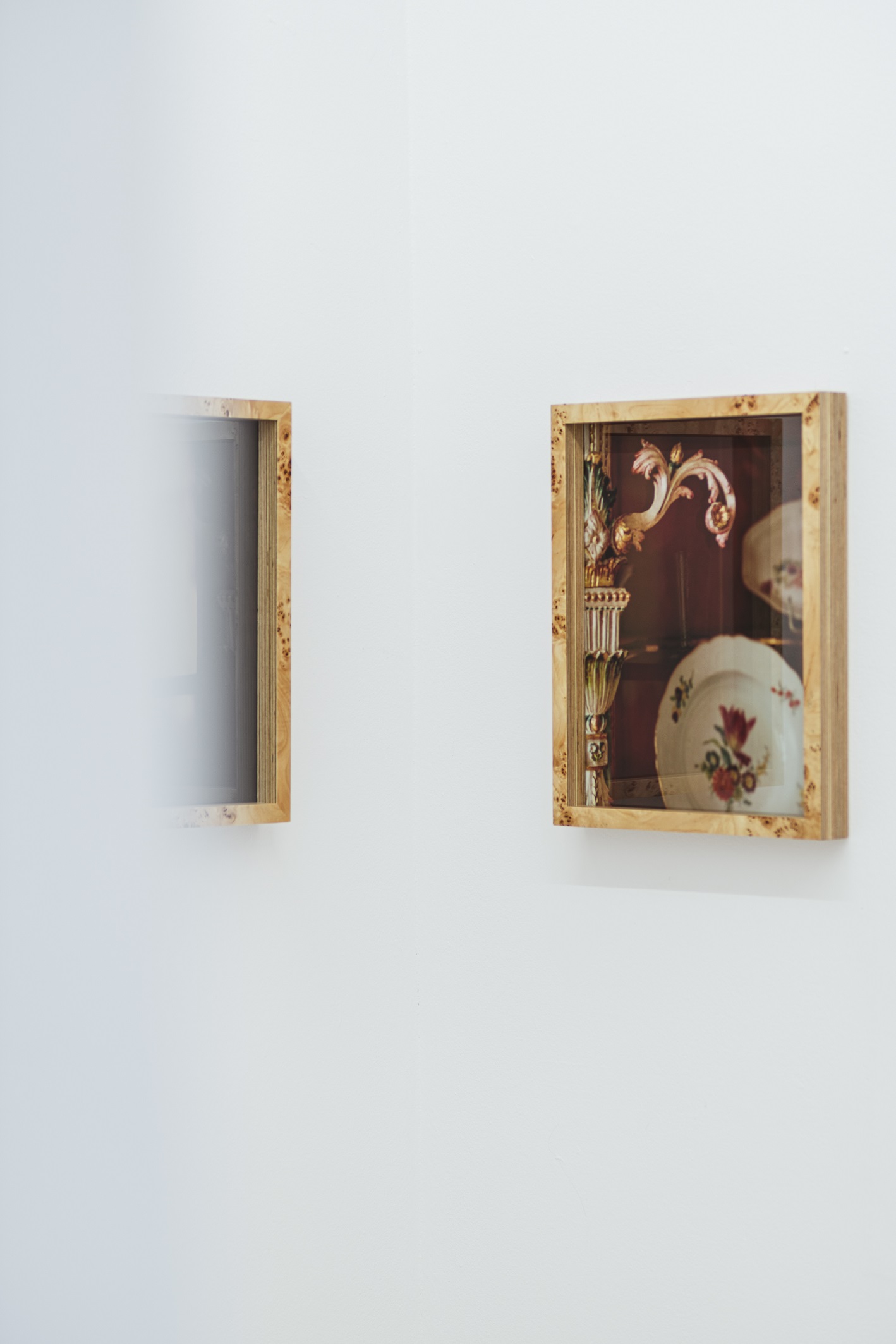
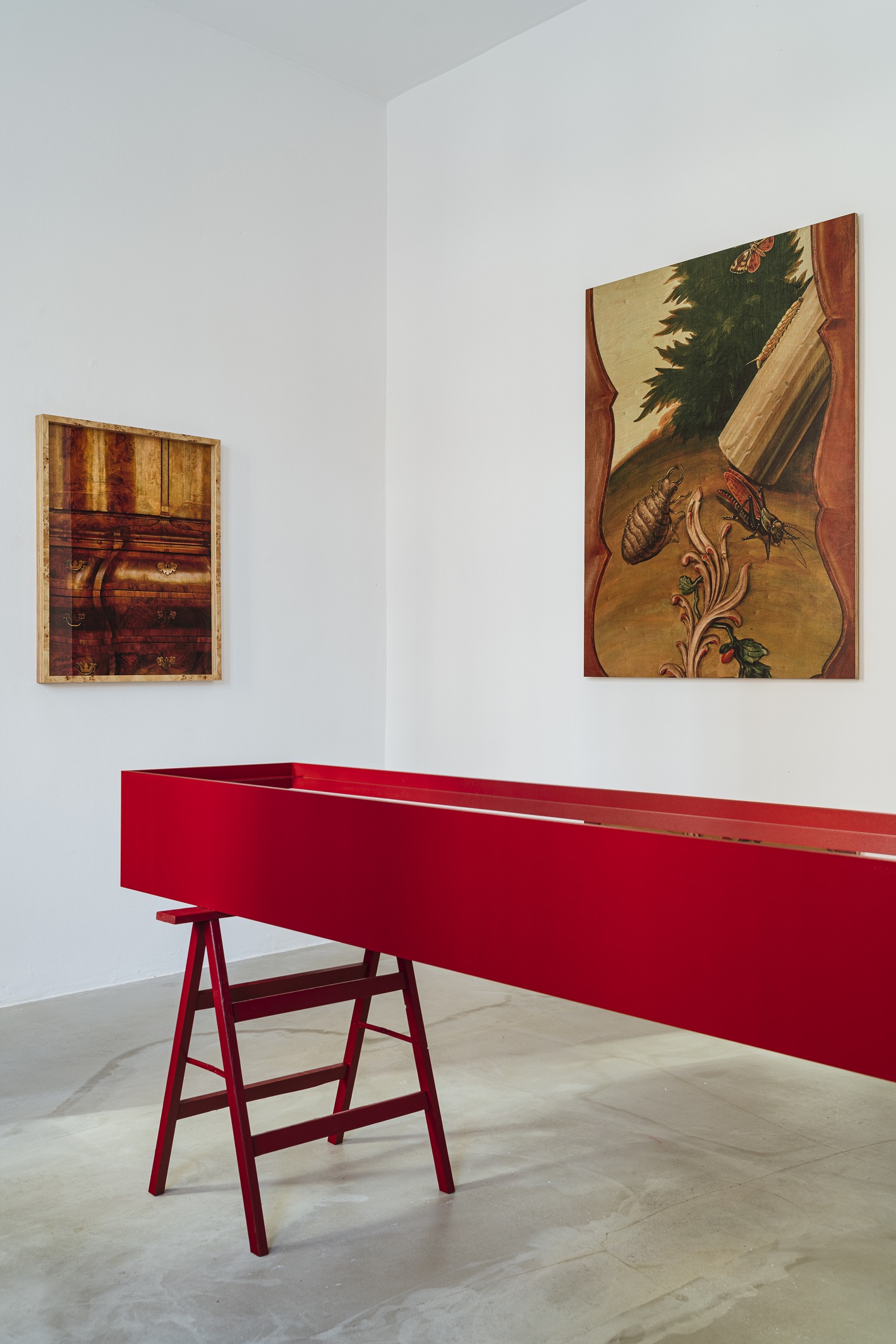
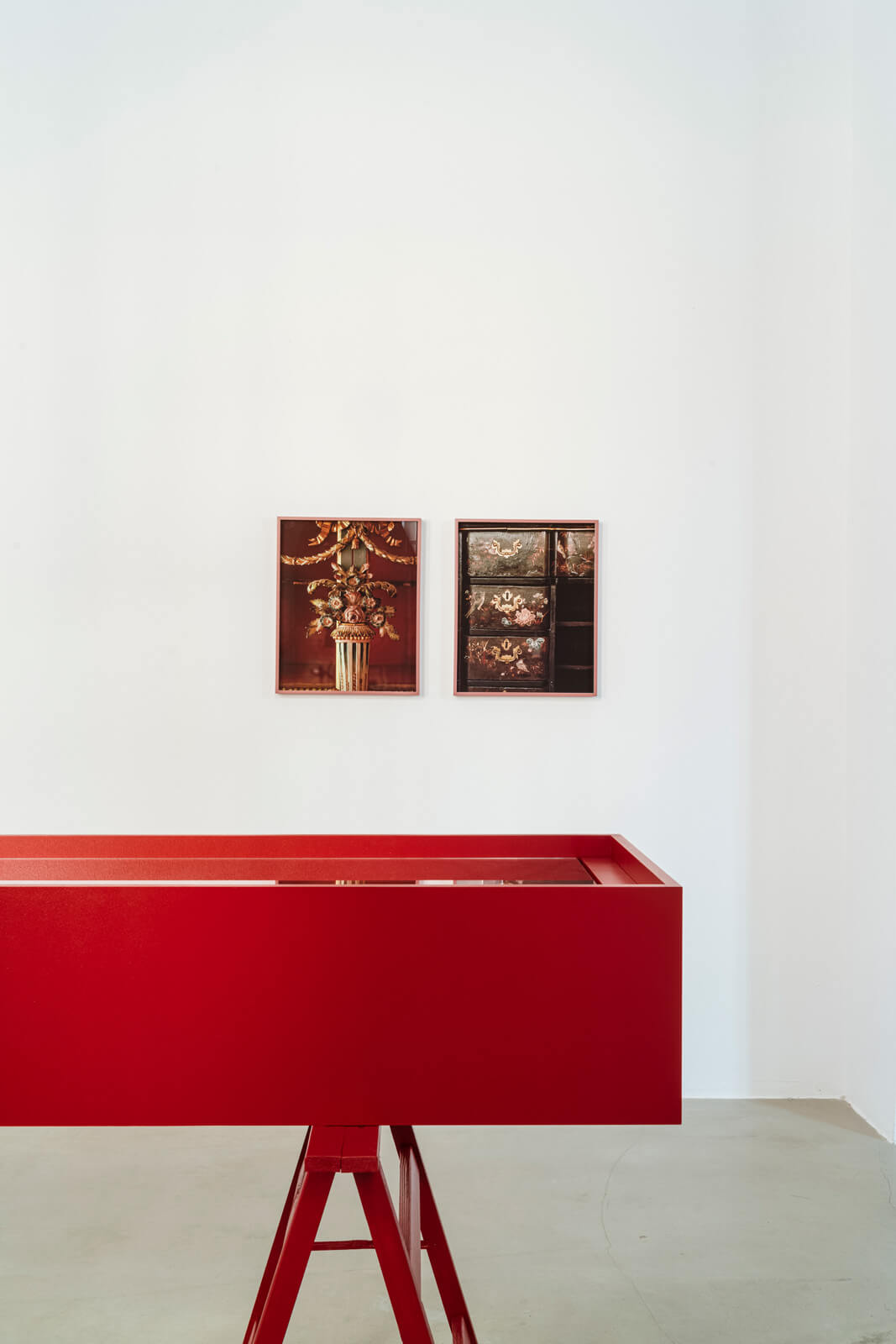
The interior details and elements have been portrayed by Anna Orłowska in her photographs. Sensing the organoleptic and formal inconsistencies between the “old” and the “new”, the artist divided the house into the eponymous flatlets – autonomous spaces. Framed in wood veneer, her photographs depict their individual completeness.
Paradoxically, it was not the mock-up of the building with marked original and added areas that offered evidence of the inconsistency and autonomy of the elements from which the Gdańsk burgher house was assembled. This evidence should be looked for in close-ups, in the analytical perspective on details, in photographs that highlight the structure of upholstery or traces of brush strokes on a plaster ornament, like in a historic preservation laboratory. The new function of the space, used today as a museum, a tourist attraction, unites and justifies all the tricks – not always fair – used in the rebuilding process.
The interior details and elements have been portrayed by Anna Orłowska in her photographs. Sensing the organoleptic and formal inconsistencies between the “old” and the “new”, the artist divided the house into the eponymous flatlets – autonomous spaces. Framed in wood veneer, her photographs depict their individual completeness.
Paradoxically, it was not the mock-up of the building with marked original and added areas that offered evidence of the inconsistency and autonomy of the elements from which the Gdańsk burgher house was assembled. This evidence should be looked for in close-ups, in the analytical perspective on details, in photographs that highlight the structure of upholstery or traces of brush strokes on a plaster ornament, like in a historic preservation laboratory. The new function of the space, used today as a museum, a tourist attraction, unites and justifies all the tricks – not always fair – used in the rebuilding process.
The interior details and elements have been portrayed by Anna Orłowska in her photographs. Sensing the organoleptic and formal inconsistencies between the “old” and the “new”, the artist divided the house into the eponymous flatlets – autonomous spaces. Framed in wood veneer, her photographs depict their individual completeness.
Paradoxically, it was not the mock-up of the building with marked original and added areas that offered evidence of the inconsistency and autonomy of the elements from which the Gdańsk burgher house was assembled. This evidence should be looked for in close-ups, in the analytical perspective on details, in photographs that highlight the structure of upholstery or traces of brush strokes on a plaster ornament, like in a historic preservation laboratory. The new function of the space, used today as a museum, a tourist attraction, unites and justifies all the tricks – not always fair – used in the rebuilding process.
The interior details and elements have been portrayed by Anna Orłowska in her photographs. Sensing the organoleptic and formal inconsistencies between the “old” and the “new”, the artist divided the house into the eponymous flatlets – autonomous spaces. Framed in wood veneer, her photographs depict their individual completeness.
Paradoxically, it was not the mock-up of the building with marked original and added areas that offered evidence of the inconsistency and autonomy of the elements from which the Gdańsk burgher house was assembled. This evidence should be looked for in close-ups, in the analytical perspective on details, in photographs that highlight the structure of upholstery or traces of brush strokes on a plaster ornament, like in a historic preservation laboratory. The new function of the space, used today as a museum, a tourist attraction, unites and justifies all the tricks – not always fair – used in the rebuilding process.
The interior details and elements have been portrayed by Anna Orłowska in her photographs. Sensing the organoleptic and formal inconsistencies between the “old” and the “new”, the artist divided the house into the eponymous flatlets – autonomous spaces. Framed in wood veneer, her photographs depict their individual completeness.
Paradoxically, it was not the mock-up of the building with marked original and added areas that offered evidence of the inconsistency and autonomy of the elements from which the Gdańsk burgher house was assembled. This evidence should be looked for in close-ups, in the analytical perspective on details, in photographs that highlight the structure of upholstery or traces of brush strokes on a plaster ornament, like in a historic preservation laboratory. The new function of the space, used today as a museum, a tourist attraction, unites and justifies all the tricks – not always fair – used in the rebuilding process.
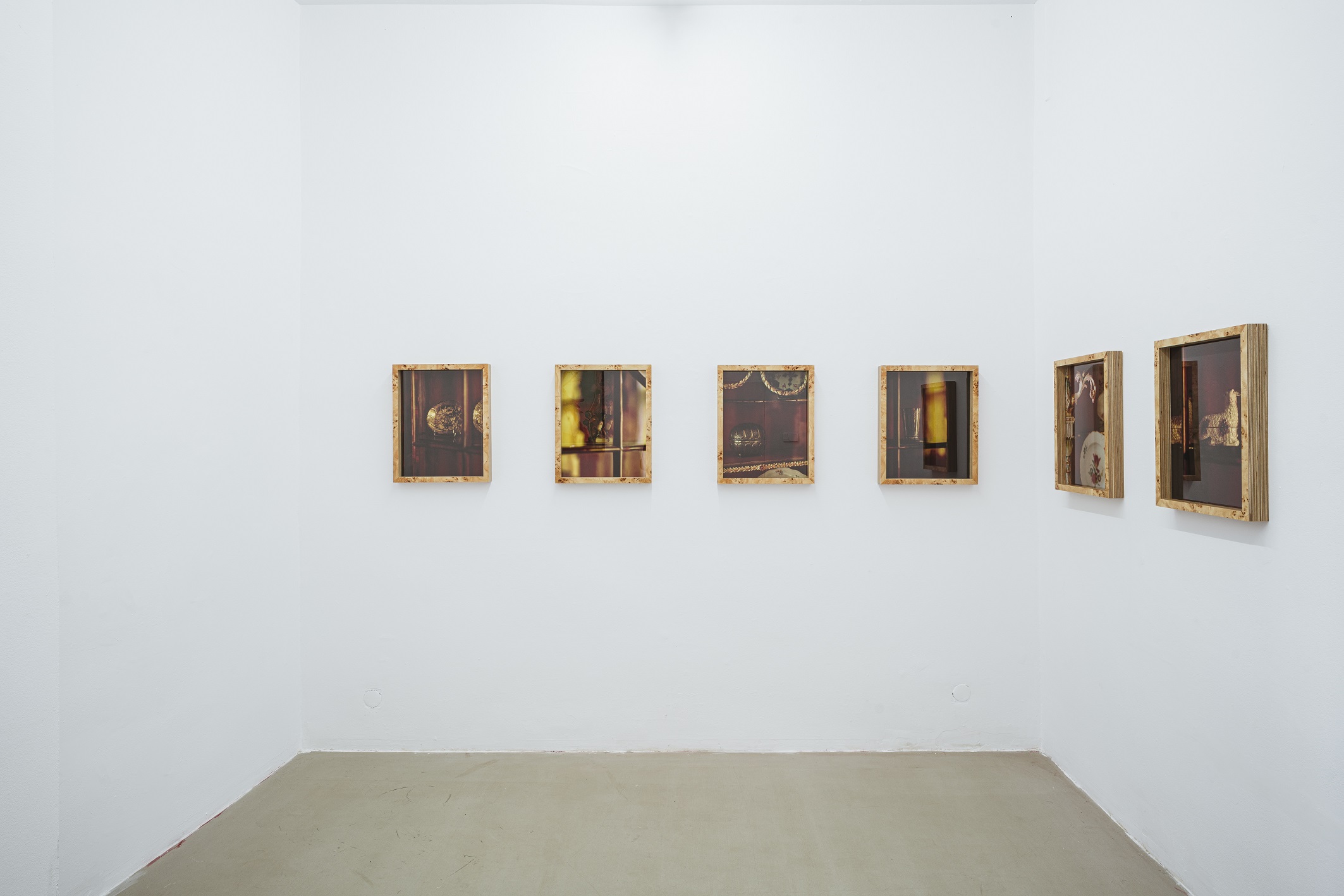
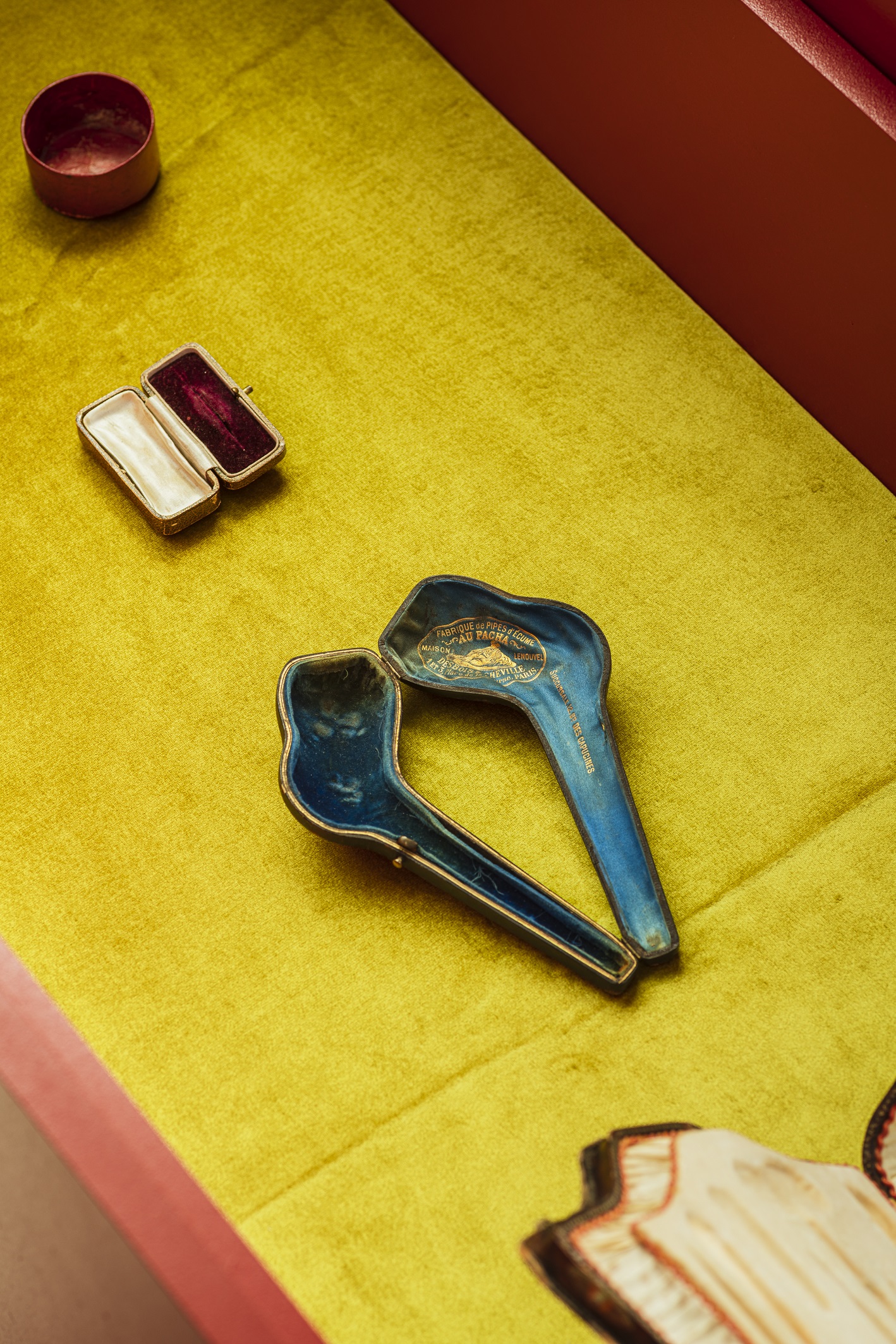
A supplement to the exhibition comes in the form of cases for storing various objects. The only formal extravagance which their old-time artisanal makers indulged in are luxury and costly materials: leather, velvet, amber, sepiolite, silver, satin, brass, tortoiseshell, mother of pearl. Reflecting almost ideally the shape of the stored and enveloped object, without superfluous decoration made de rigueur by modern-day design, these cases resemble casting moulds imitating castings made of durable materials. Displayed in the museum today as outdated and not quite functional “flatlets for things”, they seem superfluous and somewhat eccentric. Is it really so?
A supplement to the exhibition comes in the form of cases for storing various objects. The only formal extravagance which their old-time artisanal makers indulged in are luxury and costly materials: leather, velvet, amber, sepiolite, silver, satin, brass, tortoiseshell, mother of pearl. Reflecting almost ideally the shape of the stored and enveloped object, without superfluous decoration made de rigueur by modern-day design, these cases resemble casting moulds imitating castings made of durable materials. Displayed in the museum today as outdated and not quite functional “flatlets for things”, they seem superfluous and somewhat eccentric. Is it really so?
A supplement to the exhibition comes in the form of cases for storing various objects. The only formal extravagance which their old-time artisanal makers indulged in are luxury and costly materials: leather, velvet, amber, sepiolite, silver, satin, brass, tortoiseshell, mother of pearl. Reflecting almost ideally the shape of the stored and enveloped object, without superfluous decoration made de rigueur by modern-day design, these cases resemble casting moulds imitating castings made of durable materials. Displayed in the museum today as outdated and not quite functional “flatlets for things”, they seem superfluous and somewhat eccentric. Is it really so?
A supplement to the exhibition comes in the form of cases for storing various objects. The only formal extravagance which their old-time artisanal makers indulged in are luxury and costly materials: leather, velvet, amber, sepiolite, silver, satin, brass, tortoiseshell, mother of pearl. Reflecting almost ideally the shape of the stored and enveloped object, without superfluous decoration made de rigueur by modern-day design, these cases resemble casting moulds imitating castings made of durable materials. Displayed in the museum today as outdated and not quite functional “flatlets for things”, they seem superfluous and somewhat eccentric. Is it really so?
A supplement to the exhibition comes in the form of cases for storing various objects. The only formal extravagance which their old-time artisanal makers indulged in are luxury and costly materials: leather, velvet, amber, sepiolite, silver, satin, brass, tortoiseshell, mother of pearl. Reflecting almost ideally the shape of the stored and enveloped object, without superfluous decoration made de rigueur by modern-day design, these cases resemble casting moulds imitating castings made of durable materials. Displayed in the museum today as outdated and not quite functional “flatlets for things”, they seem superfluous and somewhat eccentric. Is it really so?
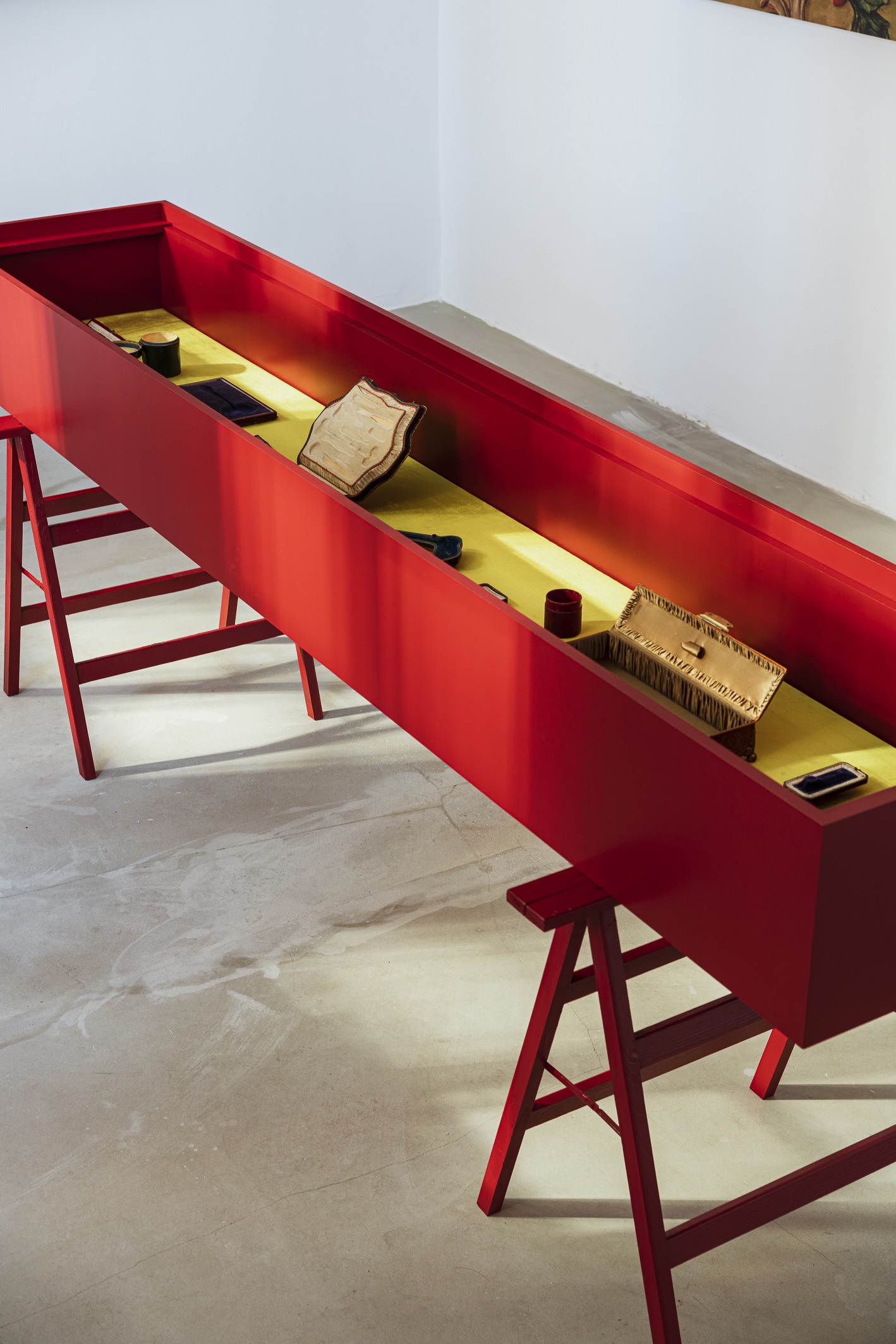
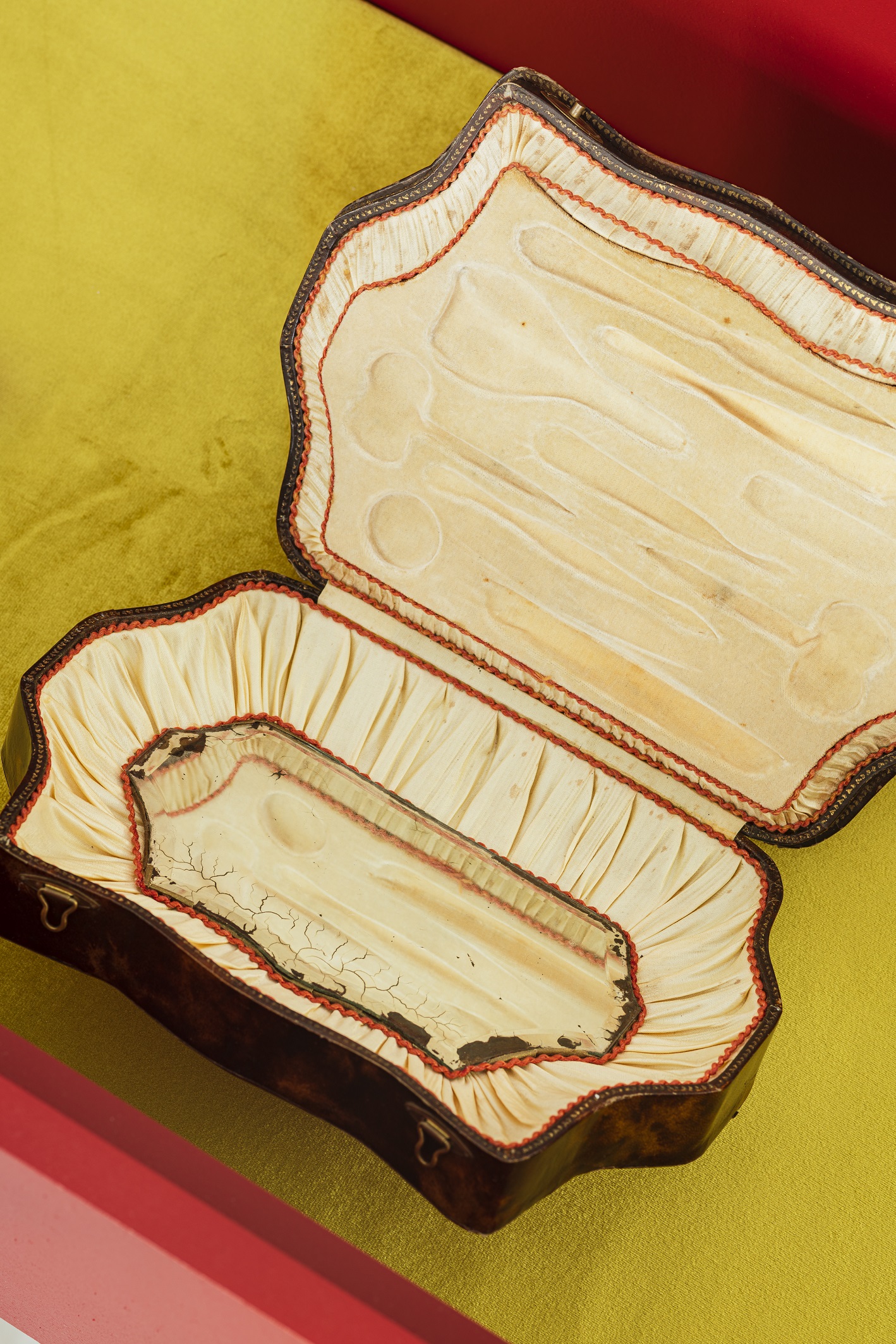
Let us think about boxes, mouldings, foils of various sizes filled with air, wire wrappings, stretchy materials, intricately curved pieces of grey cardboard and lacquered paper. About the containers and cases in which we receive – recently in an ever greater number – the diligently packed objects and trinkets, with separately wrapped accessories.
Each of them is an individual artwork. The difference between them and historic objects in terms of material and style is the same as between the rococo apartment of Johann Uphagen’s family and servants and the materials used in its reconstruction as well as the somewhat theme-park-like function of the place today.
Let us think about boxes, mouldings, foils of various sizes filled with air, wire wrappings, stretchy materials, intricately curved pieces of grey cardboard and lacquered paper. About the containers and cases in which we receive – recently in an ever greater number – the diligently packed objects and trinkets, with separately wrapped accessories.
Each of them is an individual artwork. The difference between them and historic objects in terms of material and style is the same as between the rococo apartment of Johann Uphagen’s family and servants and the materials used in its reconstruction as well as the somewhat theme-park-like function of the place today.
Let us think about boxes, mouldings, foils of various sizes filled with air, wire wrappings, stretchy materials, intricately curved pieces of grey cardboard and lacquered paper. About the containers and cases in which we receive – recently in an ever greater number – the diligently packed objects and trinkets, with separately wrapped accessories.
Each of them is an individual artwork. The difference between them and historic objects in terms of material and style is the same as between the rococo apartment of Johann Uphagen’s family and servants and the materials used in its reconstruction as well as the somewhat theme-park-like function of the place today.
Let us think about boxes, mouldings, foils of various sizes filled with air, wire wrappings, stretchy materials, intricately curved pieces of grey cardboard and lacquered paper. About the containers and cases in which we receive – recently in an ever greater number – the diligently packed objects and trinkets, with separately wrapped accessories.
Each of them is an individual artwork. The difference between them and historic objects in terms of material and style is the same as between the rococo apartment of Johann Uphagen’s family and servants and the materials used in its reconstruction as well as the somewhat theme-park-like function of the place today.
Let us think about boxes, mouldings, foils of various sizes filled with air, wire wrappings, stretchy materials, intricately curved pieces of grey cardboard and lacquered paper. About the containers and cases in which we receive – recently in an ever greater number – the diligently packed objects and trinkets, with separately wrapped accessories.
Each of them is an individual artwork. The difference between them and historic objects in terms of material and style is the same as between the rococo apartment of Johann Uphagen’s family and servants and the materials used in its reconstruction as well as the somewhat theme-park-like function of the place today.
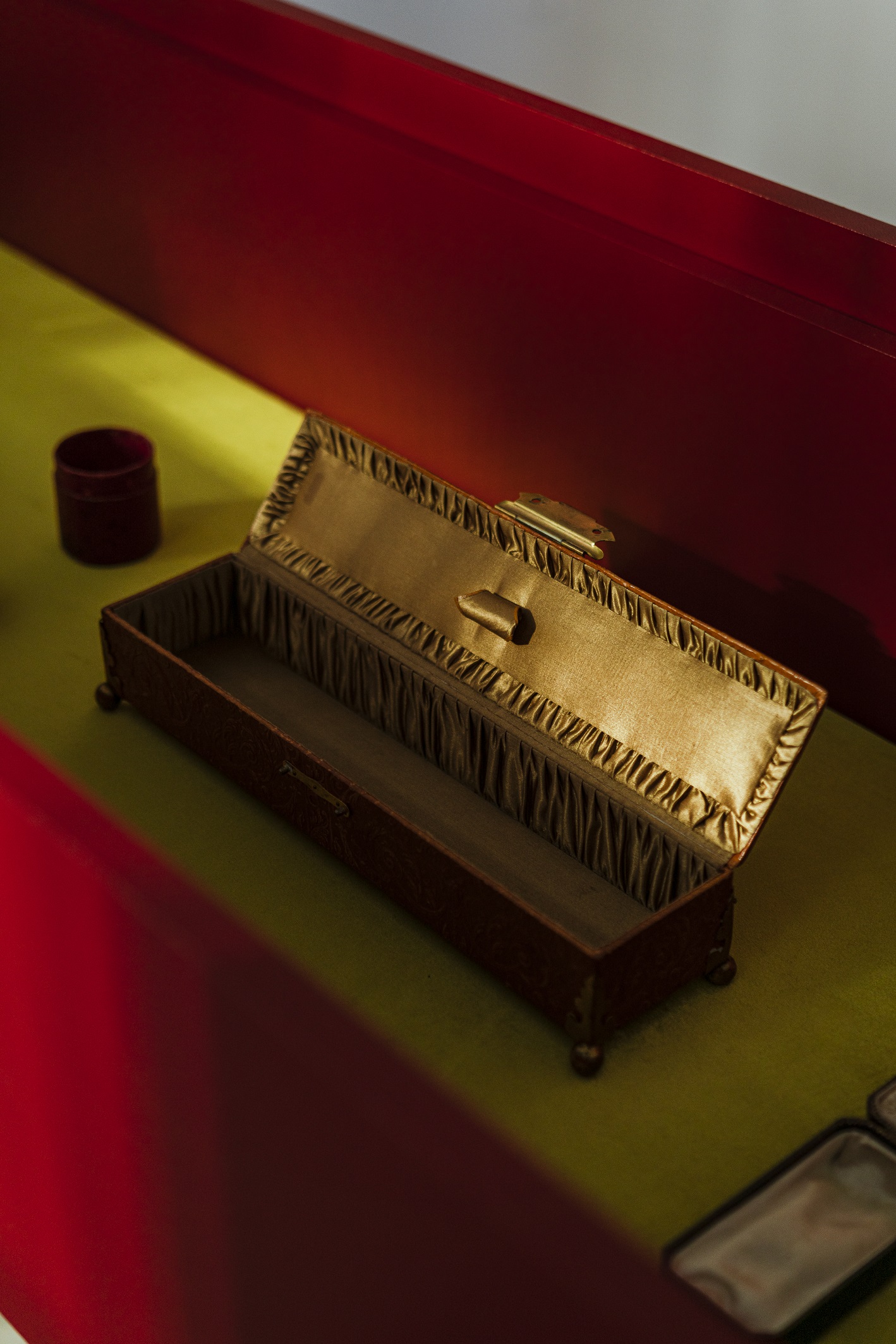
PRESS KubaParis Szum Szum NN6T EAST-TOPICS PHOTOGRAPHY Pion Studio SPATIAL DESIGN Studio Otamto GRAPHICS Kaja Gliwa (courtesy of GGM) NEXT PROJECT→
PRESS KubaParis Szum NN6T PHOTOGRAPHY Pion Studio SPATIAL DESIGN Studio Otamto GRAPHICS Kaja Gliwa (courtesy of GGM) NEXT PROJECT→